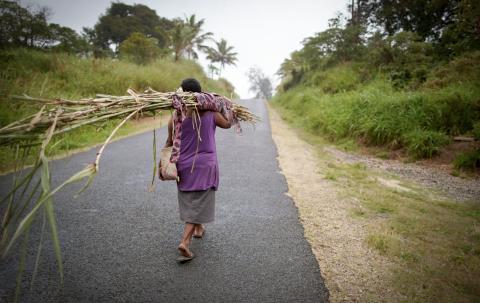I greatly appreciate that Greg Earl (The Interpreter, 6 October 2022) has read the recently published final report that was submitted early in 2019 by the team I led, and that he has flagged several points in it that are still relevant to the current reviews of development finance and overall development policy. It may be helpful if I add something about a few of these points.
Our team was strongly in favour of developing the means for the Australian government to provide much more support to blended public-private finance for infrastructure in the Asia-Pacific region. But this did not make us unequivocal supporters of establishing a new agency, mainly because of the extensive support that Australia had been (and still is) providing through the multilateral banks (MDBs) and specialists such as the Public-Private Infrastructure Advisory Facility, the Private Infrastructure Development Group and its subsidiary InfraCo Asia, and the Convergence network. So, we said “maybe” on a new agency, although we said “definitely” on more blended finance.
We tried to make our “maybe” a helpful guide to forming the right institutional structure. We had been tasked with identifying several genuine institutional options and describing their respective advantages and disadvantages. And we recognised there were conflicting considerations that ministers would need to weigh against each other. So, we summarised them in our Table 3 (replicated here), hoping this would tell readers not what to choose but how to choose. It does for me, as below.
Now, fortunately, the re‑review by the Department of Foreign Affairs and Trade (DFAT) of how best to provide development finance can benefit from several years’ experience with the Australian Infrastructure Financing Facility for the Pacific, operation of Export Finance Australia (EFA) with its boosted mandate and resources, and DFAT’s own Emerging Markets Impact Investment Fund, as well as from Australia’s continued working with the MDBs and related specialists.
| Option 1 – DFAT alone | Option 2 – partnership with Efic | Option 3 – new entity | |
|---|---|---|---|
|
Strengths
|
Assured of being responsive to foreign-policy interests Assured of integrating the selection and implementation of new forms of financing with the rest of the development assistance program Readiest use of network of posts for identifying opportunities |
Efic has much of the needed technical capacity Efic already has a Board, management and staff focused on finance Efic would present a distinct face to clients and the public as official provider of large items of development finance Efic can lend in foreign currency, subject to its own risk management |
Would have a single, clear focus, and could develop its own corporate culture based on expertise in development finance and closeness to private financiers Would acquire its own standing among other countries' development finance institutions, and thereby be able readily to co-finance with them |
|
Weaknesses
|
Specialist capacity would need to be established, with an initial period of reliance on contracted expertise DFAT’s systems – in particular, for handling appropriations, making and managing contracts, and keeping accounts – would need modification to handle new forms of financing |
Efic has at present no capability for making equity investments Efic has slightly higher cost of funding than Commonwealth Arrangements would be needed for coordination with the rest of DFAT’s development assistance DFAT would have little in-house capacity to provide other development finance in non-grant forms |
Probably more than 18 months would be needed for establishing the new entity’s governance, staff, systems and in-house technical capacity It would be likely to involve significant additional cost to run Mandate would overlap considerably with that of Efic when the latter is extended as planned Arrangements would be needed for coordination with the rest of DFAT’s development assistance As a separate entity, it would lack DFAT’s close links with intelligence agencies |
|
Opportunities
|
Would most readily fit with reconfiguring the development assistance program to build economic partnerships with countries graduating from previous forms of assistance |
Efic could enhance its links with other countries’ export credit agencies, capable Australian companies and investment banks |
Might help to bring about a more integrated approach to Australia’s participation in multilateral banks, development funds and investment platforms |
|
Threats
|
Recruiting and retaining specialist staff with sufficient capability could be undermined by subordination to DFAT’s practices in remunerating and reallocating staff Contains the risk that development objectives would be unduly subordinated to foreign-policy priorities |
Legislative change might encounter resistance from Efic stakeholders concerned at weakening its function of assisting Australian businesses and employment Might appear as DFAT subsidising Efic’s operations Might lead to preponderance of commercial objectives over development or foreign-policy objectives |
Would create expectations of its soon operating on a substantial scale, which unless fulfilled could lead to criticism and embarrassment for the Government Other agencies with related functions, especially DFAT and Efic, could compete with the entity and make coordination problems outweigh its benefits |
Drawn from Feasibility Study on the Use of Non-Grant Financing (“Eyers report”), via DFAT website. Note, Export Finance Australia was previously known as the Export Finance and Insurance Corporation, Efic.
So, does that Table 3 tell us the way to go? While admitting my current knowledge is limited, I’d put the greatest weight on integration with foreign policy and coordination with the rest of development assistance and climate finance. I’d advise ministers first to establish much closer collaboration among DFAT, EFA and Treasury (because of its responsibility for relations with the International Monetary Fund and the MDBs, and for what’s now the Infrastructure and Commercial Advisory Office), and to want experience with that to inform in due course a decision whether to form a new entity for blended finance and associated investments.
There remain several difficult issues to address, and Earl is correct in pointing to the needs for both openness and careful evaluation of how well any new mechanisms or institutions function. As one aspect of this, did our report suggest, as he says, that the success of loans and equity investments can be largely assessed by market mechanisms? I hope not, since it’s well known that infrastructure projects proposed by private‑sector developers can lead to their being monopoly providers assured of ample profits at the expense of users. The latter part of our report’s section on development impact discussed impact measurement for such projects. I expect this will be a crucial issue in the years ahead.
Which brings me back, as it will many other interested observers, to DFAT’s termination a few years ago of the internal Office of Development Effectiveness and the external Independent Evaluation Committee. These had functions that have long been considered valuable for having a program of development assistance conducted professionally. Any expansion by this government of the finance or other supports used in its development assistance program will add force to the case for re‑establishing those functions.

